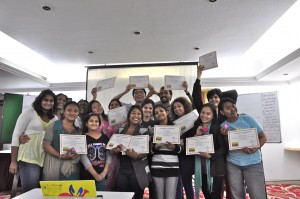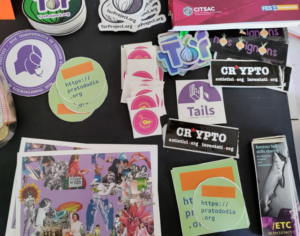Day 4: Refining the Message for Social Media
Now that Obama has won, and worldwide abortion funds are in no immediate danger, it’s time to return to our coverage of last week’s Youth Advocacy Institute.
 Day 4 of the institute was dedicated to social media. Not all available tools of course – but Facebook, Twitter and Blogging – three platforms that have helped people share their political views, act as agents of change and take part in making the world a more democratic place to live in.
Day 4 of the institute was dedicated to social media. Not all available tools of course – but Facebook, Twitter and Blogging – three platforms that have helped people share their political views, act as agents of change and take part in making the world a more democratic place to live in.
We began the day with Facebook. Not surprisingly, all participants were already using the tool successfully to develop their personal networks. But not all of them were using it professionally. So, we discussed FB as a professional too. Then we got some practice: we decided to make a few new connections, and post at least one thoughtful comment on these sites.
Why comments? Not just “likes” or “shares”? Because it is more personal, and more direct. Commenting on someone’s Facebook post for professional reasons is very similar to meeting someone at a networking dinner. You can be informal, genuine, and a lot more relaxed than you might be if you were meeting them in your office. The point however is to let these relationships grow, by constantly participating in their discussions by commenting, and sharing your opinions. Facebook can develop into a forum where you show your political side, and find professional contacts who share your opinions and passions.

Then we moved on to Twitter. This was a bit new to some people. Participants already familiar with Twitter helped the others, and soon we were all connected to each other. We discussed the idea behind tweeting: it’s a form of microbloging, where you share a concise opinion about a resource you want to share with your community. We also talked about using hashtags to tune into global conversations on a particular topic. Our hashtag for the event was #ASAPYAI
Twitter unlike Facebook allows you to follow “influencers” – people who might help you have the impact you want to have. This could be journalists, policy makers, other advocates, politicians, lawyers, providers… and so many others. You can read their tweets, share and respond when you have something valuable to say. The advantage: your response is short, and more likely to make an impression.
Then we moved on to blogging. How do we create relevant, timely, powerful posts, and yet keep them simple and focused? It’s simple. Think “Story”. This story might not necessarily feature a character, but could simply discuss the evolution of a concept or a thought. But whatever it may be, it opens doors to further discussions, and probes the reader to think. While on the topic, we talked about subversion – but there’s so much to say that it deserves a post on its own.
To be honest, this session was a bit more difficult than the others for me and for the participants. A blog is fun when you write it, but can be complex when you try to conceptualize the work that goes into it: research, curating, writing and editing. The participants however got a better idea when Inna Hudaya stepped in and walked them through her blog, and helped them set up their own.
Here are some that the participants sent me:
Dakshitha Wickremaratne – http://youthchampiondakki.blogspot.in/
Esha Saraswat – http://youthchampionesha0516.blogspot.in/
Loveria Sekarrini – http://youthchampionsindonesia.blogspot.in/
 We concluded with a quick look at the Ushahidi platform, which is probably useful for all those working with young men and women who don’t have access to the Internet, but own a cell phone. We talked about crowdsourcing, and presenting their opinions to the world through these maps.
We concluded with a quick look at the Ushahidi platform, which is probably useful for all those working with young men and women who don’t have access to the Internet, but own a cell phone. We talked about crowdsourcing, and presenting their opinions to the world through these maps.
The four-day workshop was a great learning experience for us and hopefully for the participants. It was also fun: we hung out during breakfast and dinner, visited The Village, a very Bollywood-inspired restaurant on day two, and watched the Vagina Monologues on Day 3.We wrapped up the four-day event by presenting certificates, and Diwali lamps to all participants. As a surprise, we also gave them visiting cards with our logo! And of course, we danced one last time together to the beat of Bollywood.
You can take part in the discussions and write to us anytime. We are planning to tweet updates from the YAI using the hashtag #ASAPYAI. We are also posting photos to Facebook, and reports to our blog! For regular updates from ASAP please subscribe to our blog.







